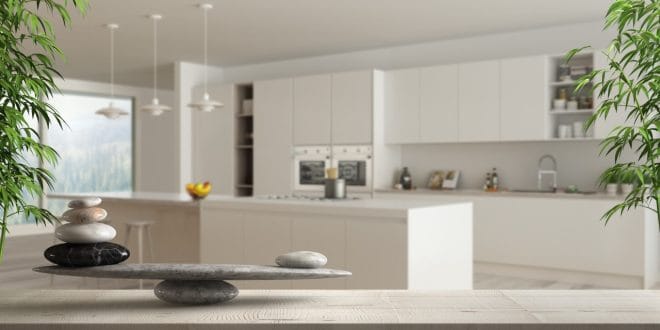The living room is often the heart of your home—a place where you relax, entertain guests, and spend time with loved ones. In feng shui, creating a peaceful and balanced living room helps promote harmony, relaxation, and positive energy. When your living room is arranged with intention, it becomes a space that supports your well-being and fosters connection.
In this article, I’ll guide you through practical feng shui tips to transform your living room into a balanced, inviting haven.
1. Clear the Clutter to Invite Fresh Energy
In feng shui, clutter is one of the biggest blockers of positive energy (chi). A clutter-free living room allows energy to flow smoothly, creating a calming and open atmosphere.
Tips to Declutter:
- Remove unnecessary items, such as old magazines, toys, or unused décor.
- Organize frequently used items in attractive storage solutions like baskets or cabinets.
- Keep surfaces like coffee tables and shelves minimal and clean.
Example: A cluttered living room with stacks of papers and random items can feel overwhelming. Tidying up the space instantly brings a sense of peace and clarity.
Tip: Make decluttering a regular habit to prevent energy from becoming stagnant.
2. Arrange Furniture for Energy Flow (Chi)
Furniture placement plays a crucial role in how energy moves through your living room. In feng shui, it’s important to create an open and welcoming layout that encourages the free flow of chi.
Furniture Placement Tips:
- Avoid blocking doorways and pathways with large furniture pieces.
- Arrange your seating area so that people can face each other comfortably, promoting conversation and connection.
- Place your main seating (e.g., sofa) in the command position, where you can see the entrance but are not directly in line with it.
Example: If your sofa is pushed up against a wall and faces away from the door, you may feel disconnected from the flow of energy. Repositioning it to face the entrance can create a more grounded, welcoming space.
Tip: Ensure there’s enough space to walk freely around the furniture to maintain good energy flow.
3. Use Soothing Colors to Promote Balance
Colors can have a significant impact on the energy of your living room. In feng shui, soft, earthy or neutral tones are ideal for promoting relaxation and balance. However, you can also incorporate accent colors to enhance specific energies, depending on your goals.
Recommended Colors:
- Earth tones (beige, tan, light brown) to create grounding and stability.
- Soft blues and greens to promote calm and relaxation.
- Warm accents (red, orange) to energize and spark conversation—use these sparingly to maintain balance.
Example: A living room with beige walls, green plants, and subtle red pillows creates a harmonious blend of calming and energizing elements.
Tip: Experiment with color through throw pillows, rugs, and artwork, especially if you want to test a new color without repainting walls.
4. Bring Nature Indoors with Plants
Plants are a powerful way to introduce the wood element into your living room, symbolizing growth, vitality, and renewal. They also help purify the air and create a sense of connection to nature.
Best Plants for Feng Shui:
- Money tree (Pachira aquatica): Believed to attract abundance and good fortune.
- Snake plant: Known for improving air quality and bringing a protective, grounding energy.
- Peace lily: Symbolizes harmony and helps remove toxins from the air.
Example: Placing a vibrant plant near a window can enhance the flow of positive energy in your living room.
Tip: Avoid keeping plants that are dying or unhealthy, as they can drain energy.
5. Balance the Five Elements
In feng shui, balancing the five elements (wood, fire, earth, metal, and water) helps create a harmonious environment. Each element represents different energies, and incorporating them throughout your living room can support emotional balance and well-being.
How to Use the Five Elements:
- Wood: Add plants, wooden furniture, or green décor to promote growth.
- Fire: Use candles, warm lighting, or red accents to inspire passion and motivation.
- Earth: Incorporate earthy colors and natural materials like stone or clay to provide stability.
- Metal: Add metallic accents (e.g., metal frames, white or gray décor) for clarity and focus.
- Water: Use mirrors, water-themed artwork, or blue décor to encourage flow and abundance.
Example: A living room with wooden furniture, a stone centerpiece, and a few warm candles achieves a balanced, multi-element atmosphere.
Tip: Observe which elements feel over- or under-represented in your space and adjust accordingly.
6. Use Lighting to Set the Mood
Lighting affects the mood and energy of your living room. Ideally, your space should have a mix of natural light and layered lighting (overhead, task, and accent lights) to create a warm and welcoming atmosphere.
Lighting Tips:
- Maximize natural light by keeping windows clean and unobstructed.
- Use soft, warm lighting to create a relaxing ambiance in the evening.
- Avoid harsh, overly bright lights, which can create tension or discomfort.
Example: A living room with sheer curtains that allow natural light during the day and dimmable lamps for the evening feels both bright and cozy.
Tip: Use candles or salt lamps to add a soft, soothing glow that enhances relaxation.
7. Add Meaningful Décor and Art
Your living room should reflect your personality and intentions. In feng shui, it’s important to surround yourself with items that inspire joy, peace, and positivity. Avoid keeping décor that feels heavy, depressing, or emotionally draining.
How to Choose Décor:
- Display artwork that evokes positive emotions and aligns with your goals.
- Use family photos or meaningful objects to create a sense of connection and comfort.
- Incorporate symbolic items (e.g., crystals, lucky charms) to support your intentions.
Example: A piece of artwork depicting a serene landscape can bring a calming energy to your living room.
Tip: Rotate your décor seasonally to keep the energy fresh and inspiring.
8. Create a Space for Relaxation
Your living room should encourage relaxation and unwinding. Designate a specific area for calm activities, such as reading, meditation, or enjoying a cup of tea.
Relaxation Area Ideas:
- Add a comfortable chair or cozy corner with soft cushions and a throw blanket.
- Use aromatherapy, such as a diffuser with calming essential oils like lavender or chamomile.
- Incorporate soothing sounds, such as a water fountain or gentle background music.
Example: A reading nook with a comfy chair, warm lamp, and peaceful décor creates a retreat-like vibe within your living room.
Tip: Prioritize comfort by investing in soft, inviting furniture and textiles.
Your living room is a place to relax, connect, and recharge, and applying feng shui principles can help create a space that feels balanced and peaceful. By focusing on furniture placement, color harmony, natural elements, and lighting, you can invite positive energy into your home and your life.
Start small—perhaps by clearing clutter or adding a vibrant plant—and notice how your living room’s atmosphere shifts. Over time, these adjustments can lead to a space that not only looks beautiful but also nurtures your well-being and happiness.
Ready to transform your living room with feng shui? Let the good energy flow!
 Lifeved The Keys to a Better
Lifeved The Keys to a Better


 by
by